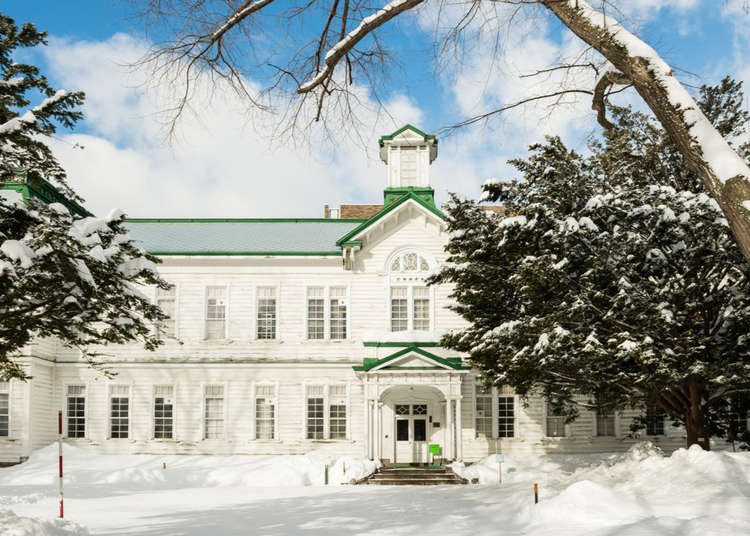
North of Sapporo City center, Hokkaido University, also called by its abbreviated name of Hokudai, is a national university consisting of 12 faculties and 21 graduate schools.
The Sapporo campus sits proudly on a large expanse of land noted for its lush greenery and is one of Sapporo’s main sightseeing spots.
Following is a model itinerary we recommend for taking in the sights you absolutely must see that includes a museum and buildings built during the Meiji era.
Main Image: twoKim studio / Shutterstock.com
- Table of Contents
-
- Start at Hokkaido University's Main Gate where you can obtain a map
- Enjoy the refreshing sights at the Central Lawn and Elm Grove
- Don't Miss the Hokkaido University Museum!
- Get lunch and try two famous dishes: the Gyutorodon and Clark Curry
- Hokkaido University Campus's ginkgo trees turn a gorgeous gold in the fall!
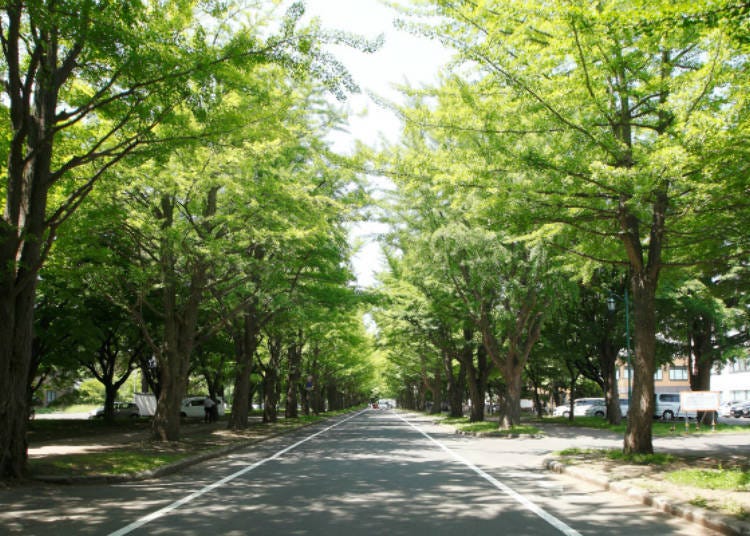
Start at Hokkaido University's Main Gate where you can obtain a map
This is the south-to-north course highly recommended by the staff of the Hokudai Public Relations Office.
Central lawn → Elm forest (Faculty of Science lawn) → The Hokkaido University Museum → row of poplar trees → row of gingko trees → and a short ways away, the Sapporo Agricultural College Farm No. 2.
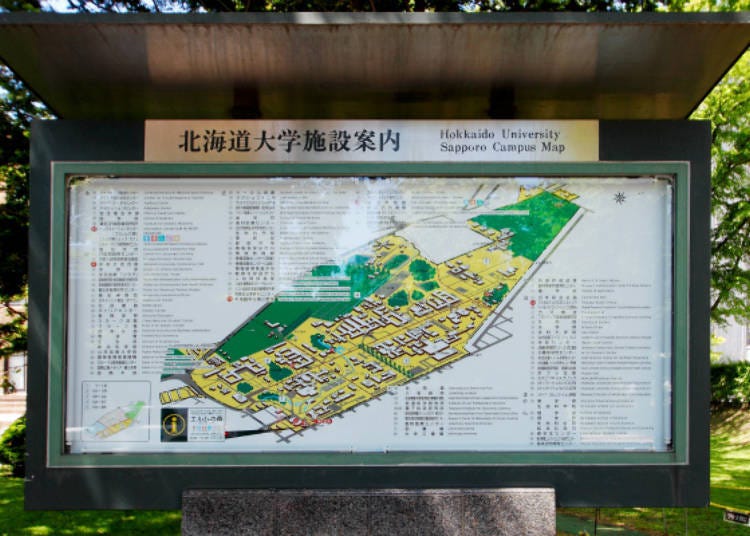
No spot is left unmentioned, heightening the excitement that lies ahead.
It is best to start off at the entrance to the Main Gate on the south side. About a seven-minute walk from the JR Hokkaido Station North Exit, around one-third of the places to see are clustered on the south side of the campus.
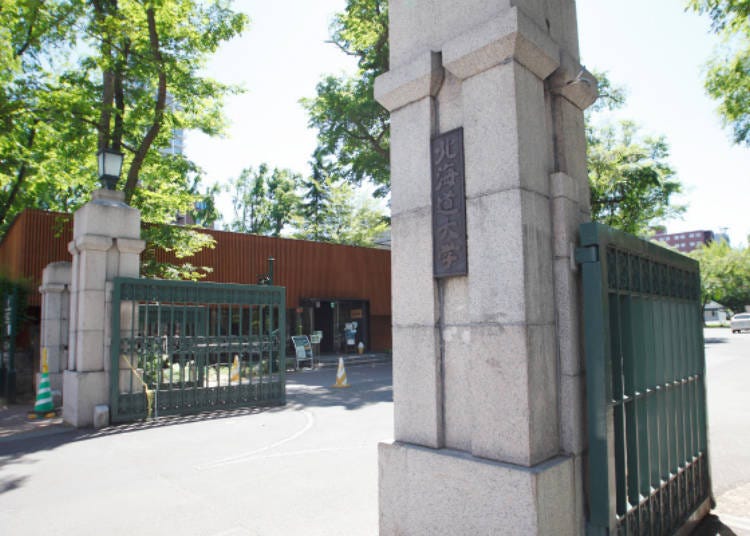
The Sapporo campus covers 1.77 million square meters. It is so huge that it is easy to become lost if not careful, so after first entering at the main gate, you will see the Elm Forest Information Center immediately to the left and there you can obtain a map of the campus.
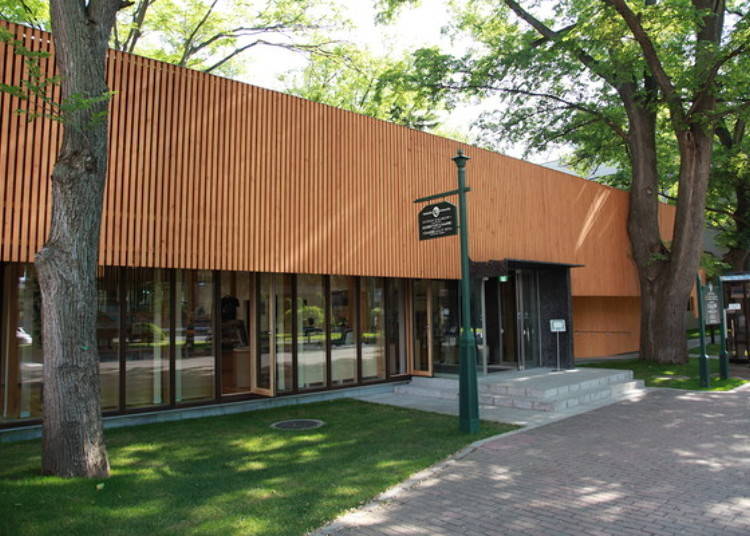
So, let’s get started!
-
Information Center Erumunomoriインフォメーションセンター「エルムの森」
- Address 〒060-0808 北海道札幌市北区北8条西5 北海道大学構内/Hokkaido University, Kita8-jonishi, Kita-ku Sapporo-shi, Hokkaido, 060-0808, Japan
- Phone Number 011-706-4680
Hours of Operation: 8:30 AM to 5:00 PM
Regular Holidays: end of the year and start of the New Year
Enjoy the refreshing sights at the Central Lawn and Elm Grove
The Central Lawn is 12,000 square meters of greenery. An artificial stream flows through the gently sloped lawn, a place popular with students who can often been seen lounging beneath the trees napping, reading, or eating. It’s hard to believe that such a peaceful place exists within walking distance of JR Sapporo Station.
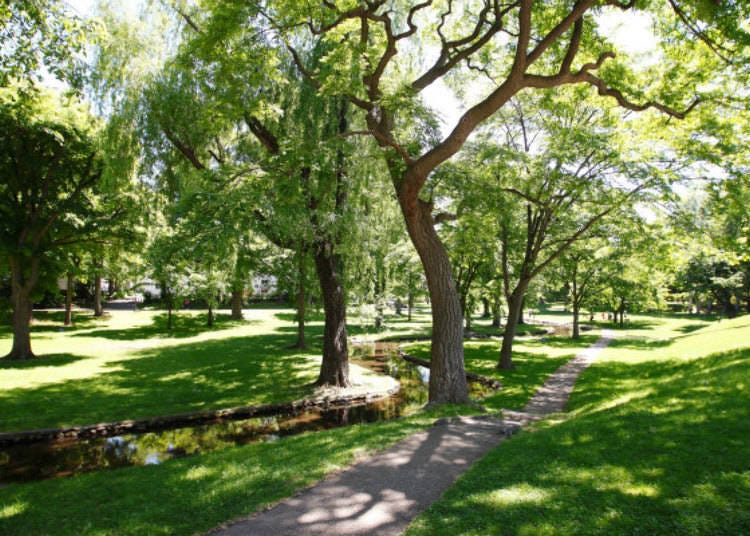
As you stroll through Elm Grove you will come upon the bust of William S. Clark. He was the first head of the Sapporo Agricultural School, the precursor to Hokkaido University, when it was formed
Clark exhorted his students with the phrase, “Boys Be Ambitious”; a phrase familiar to everyone throughout Japan and which is inscribed on the base of the bust.

On the way to Elm Grove you can see Furukawa Hall, a two-story wooden structure. It was originally constructed to be used as classrooms for forestry studies and is a splendid example of French Renaissance Style architecture in Japan and today is a registered cultural asset. It was undoubtedly a very modern and progressive building when it was constructed in 1909.
While it is not open to the public, one can nevertheless enjoy its beautiful white exterior.
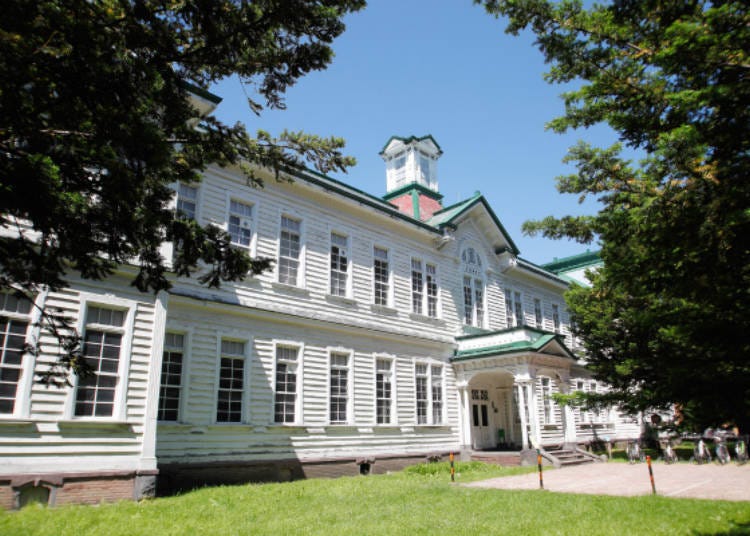
A grove of several dozen Harunire (Japanese elm) trees grace the area with their verdant leaves and viewed from above the pathways form an X shape with the sun peeking through the branches in places. The larger trees are more than 100 years old with thick branches extending out giving them a commanding presence.
Don't Miss the Hokkaido University Museum!
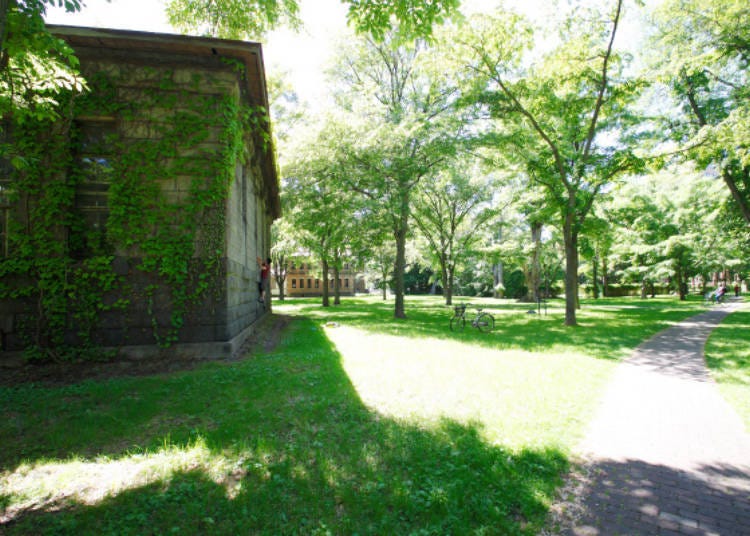
Nearby is the Hokkaido University Museum which was renovated in 2016. It contains academic specimens and resources dating back to when it opened as the Sapporo Agricultural College and part of the museum is open to the public. A ferroconcrete structure originally built in 1929 as the main building of the Faculty of Science of the former Hokkaido Imperial University, it is another building worth seeing.
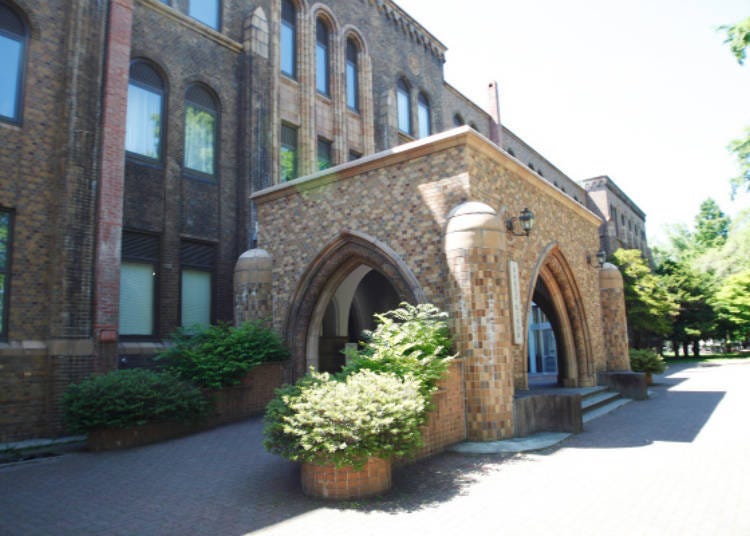
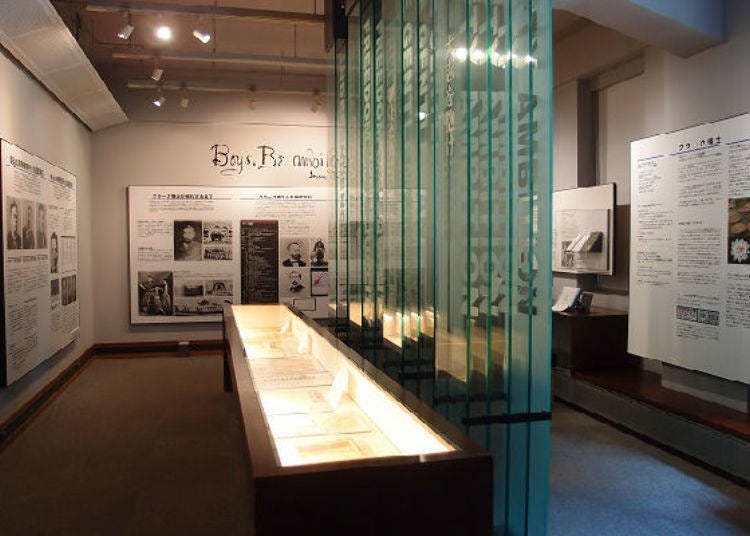
-
The Hokkaido University Museum北海道大学総合博物館
- Address 〒001-0010 北海道札幌市北区北10条西8 北海道大学構内/Hokkaido University,8, Kita10-jonishi, Kita-ku Sapporo-shi, Hokkaido, 001-0010, Japan
- Phone Number 011-706-2658
Admission: free
Hours: 10:00 AM ~ 5:00 PM (until 9:00 PM on Fridays June to October)
Holidays: Monday (the following day if Monday falls on a national holiday)
Get lunch and try two famous dishes: the Gyutorodon and Clark Curry
By now you are probably ready to take a break and probably feeling hungry. If so, then you are in luck because you can have lunch in the campus cafeteria. You can either enjoy the lively atmosphere of a Co-op cafeteria surrounded by students or if you prefer a more leisurely lunch enjoy the cuisine of the Restaurant Elm located in the Faculty House Trillium.
This is one of the seven Co-op cafeterias for students on campus. There are two floors, the first being the cafeteria offering ramen and a wide variety of set menus designed to fill any student’s stomach.
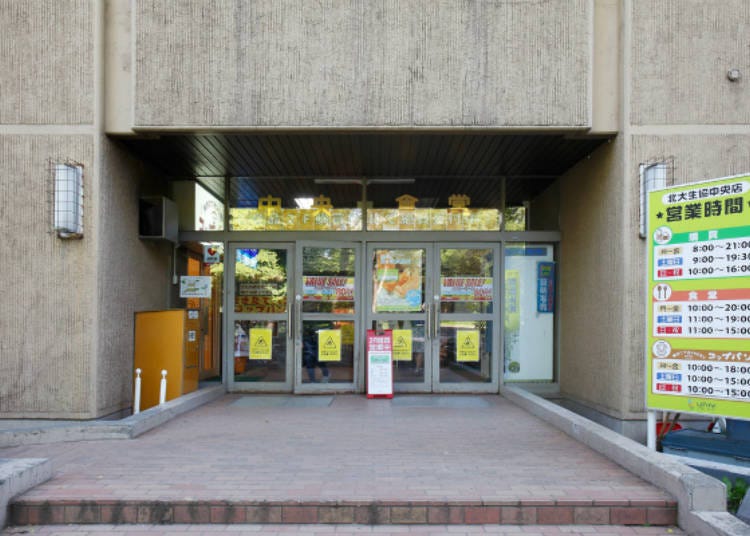
One of the most popular dishes offered in the Co-op cafeterias is the Gyutorodon, which is also popular with tourists. (580 yen for a medium-sized serving)
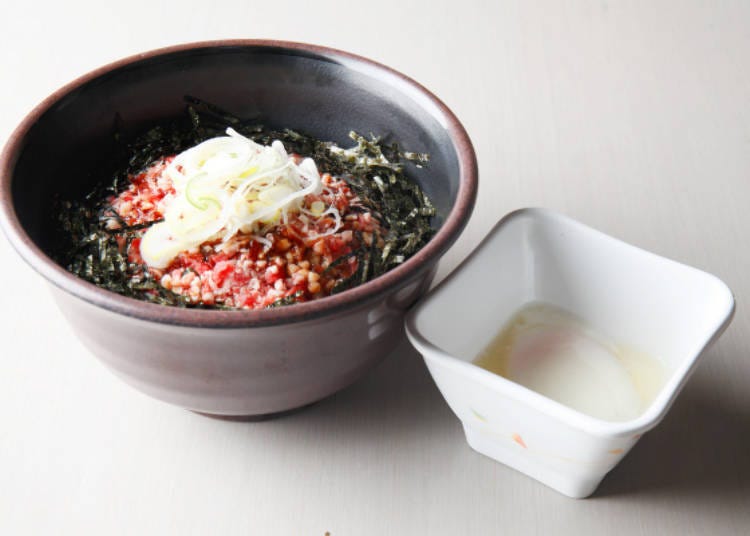
Gyutorodon is a bowl of rice topped with fresh raw ground beef raised in the healthy environment of a Tokachi ranch. The beef “flakes” are placed on cold rice and then covered with a sweet-soy-based sauce.
The combination of the ingredients will melt in your mouth from the very first bite. Some like to add a half-boiled egg (64 yen) on top!
Two dishes popular with tourists in the second-floor cafeteria are the Gyutorodon and Chicken Soup Curry (483 yen). Please note that on weekdays between 11:30 and 1:00 PM the facility is not open to off-campus visitors.
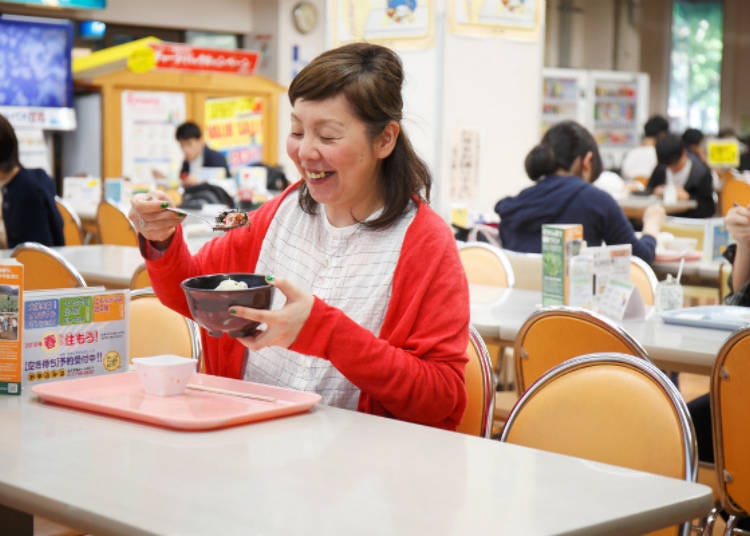
-
Chuoshokudo中央食堂
- Address 〒001-0011 北海道札幌市北区北11条西8 北海道大学構内/Hokkaido University,8, Kita11-jonishi, Kita-ku Sapporo-shi, Hokkaido, 001-0011, Japan
- Phone Number 011-726-4780
Prices:
Hours: 1st floor cafeteria: 10:00 AM ~ 8:00 PM, Saturday 11:00 AM ~ 7:00 PM, Sundays and holidays 11:00 AM ~ 3:00 PM; 2nd floor cafeteria: 11:00 AM ~ 2:00 PM ※ Note that entrance to both cafeterias is restricted to students, faculty and staff between the hours of 11:30 AM ~ 1:00 PM on weekdays. Tourists are not allowed to use the facilities at these times.
Closed: End of year and first of year; the first Sunday in September
Restaurant Elm is an alternative; its menu lists Clark Curry (with salad) for 1,140 yen.
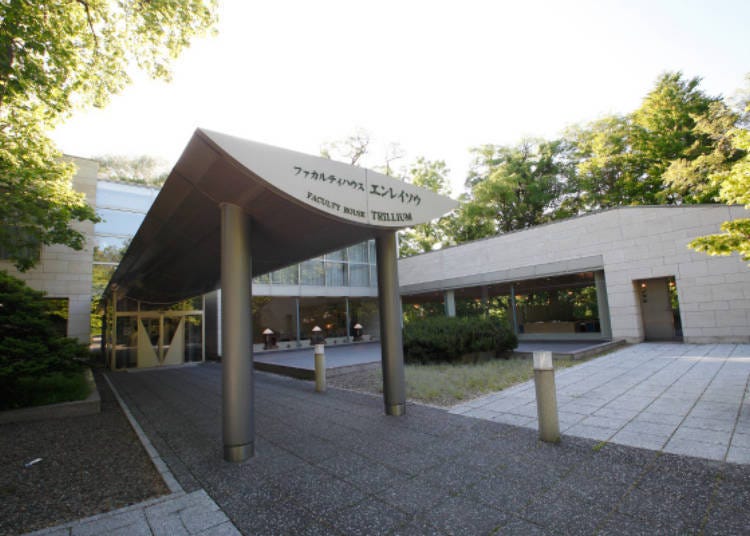
This dish is named after Dr. Clark.
When Dr. Clark was at the Sapporo Agricultural College he was concerned about the nutritional diet of students living in the dormitory, so he forbade rice because he believed it not to be nutritious. He then created a dorm rule that allowed only curry rice to be served.
When someone asked, “What would Dr. Clark do today?” they were reminded of that story and this led to the creation of the dish bearing his name.
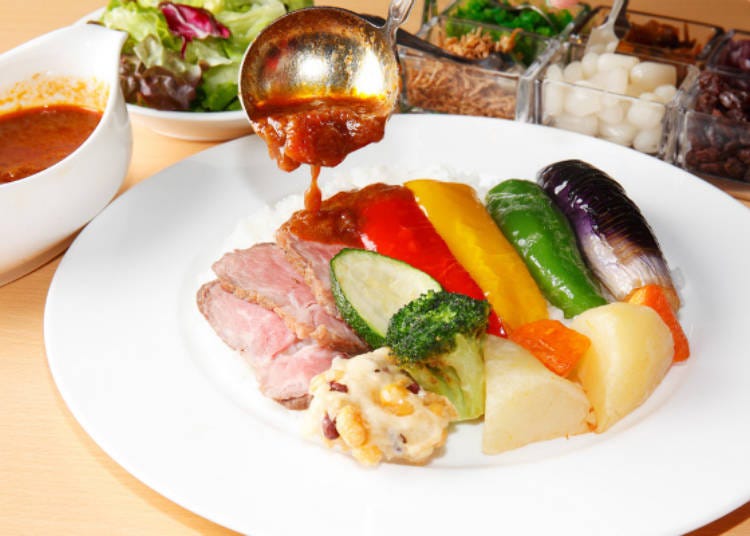
Spices are added to the onions as they are grilled to a candy color, then stewed tomatoes are added to make the roux resulting in a pleasantly smooth slightly bitter flavor to which spice is later added. The roux is then poured over succulent roast beef and nine types of vegetables and is truly a delicious sight to behold!
The restaurant is managed by the Sapporo Grand Hotel, one of the oldest in Sapporo. This is a place off the beaten track where you can enjoy exquisite hotel cuisine!

-
Restaurant Erumuレストランエルム
- Address 〒001-0011 北海道札幌市北区北11条西8 北海道大学構内/Hokkaido University, 8, Kita11-jonishi, Kita-ku Sapporo-shi, Hokkaido, 001-0011, Japan
- Phone Number 011-726-7601
Hours: 11:30 a.m. - 5:00 p.m. (Last order at 4:30 p.m.)
Closed: Saturday, Sunday, national holidays
Hokkaido University Campus's ginkgo trees turn a gorgeous gold in the fall!
It’s time to resume our walk after a satisfying lunch! Going west along the path that runs between the Central Co-op Cafeteria and the Hokkaido University Museum, you will come upon a row of poplar trees. The pathway runs for 80 meters between the rows of trees and is covered with wood chips.
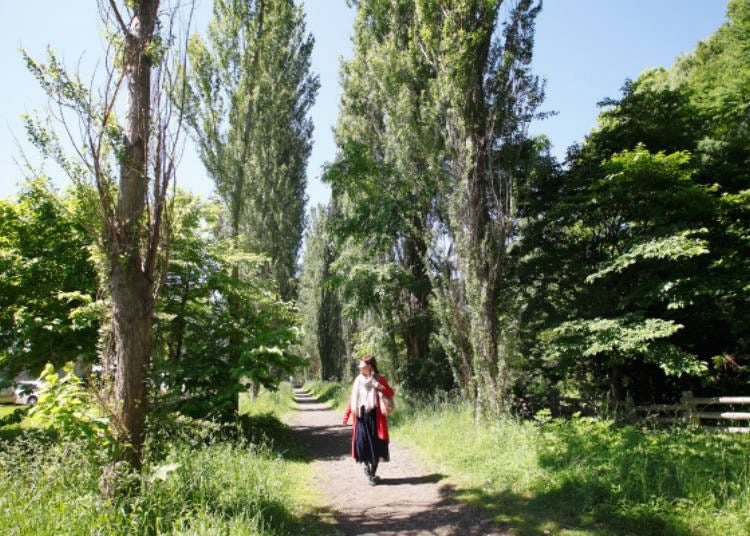
In the Botanical Gardens nearby one can see the types of flowers and trees often found in northern regions of the country. Near the entrance there is a bust of Dr. Inazo Nitobe, renowned for his contributions internationally, who was a member of the second graduating class of the Sapporo Agricultural College.
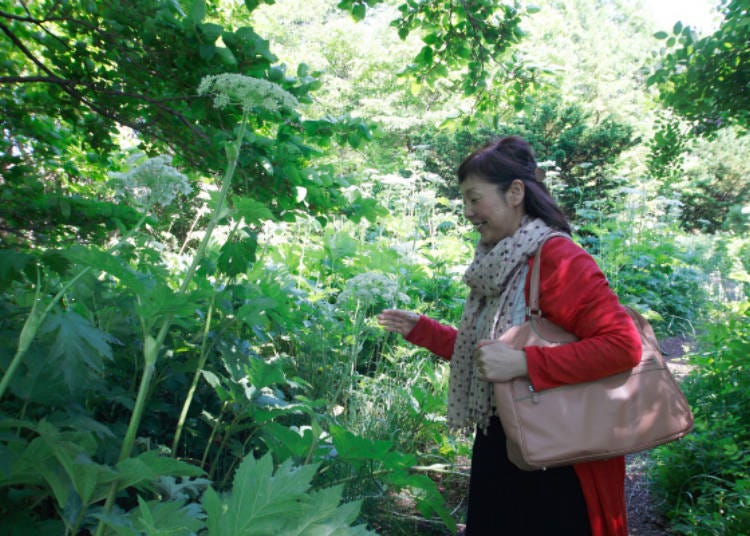
On the Sapporo campus it is possible to see more than 30 types of wild birds, such as the woodpecker and tit, and at Ono Pond mallard ducks are often seen swimming about. Around the pond in summer one can see trillium and lotus flowers which love summer, making this a popular place to stroll among the local citizens who come to see them.
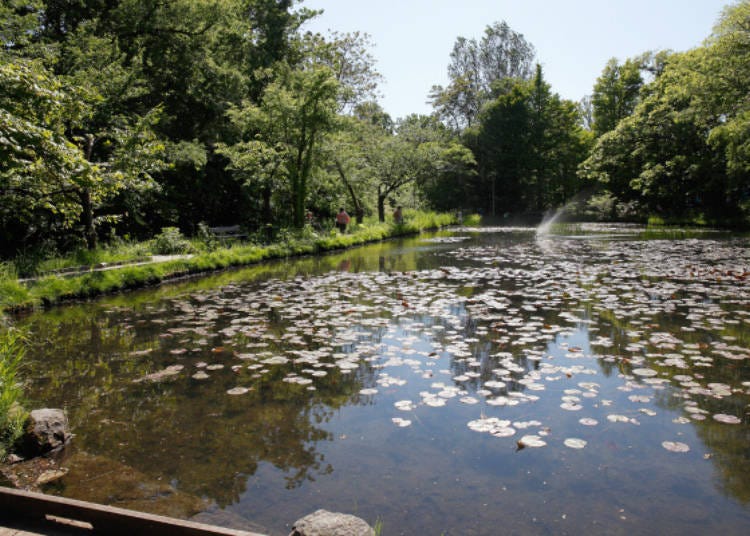
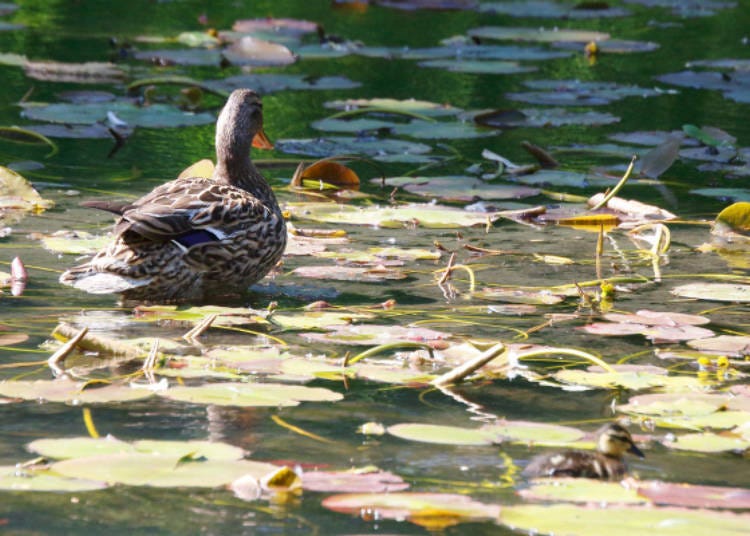
The avenue lined with gingko trees is the highlight of the walk! The road called Kita Jusanjo-dori extends about 380 meters and is lined with majestic gingko trees!
The luxurious green leaves will turn to a beautiful yellow sometime between the end of October and early November in most years. In any season the view is magnificent.
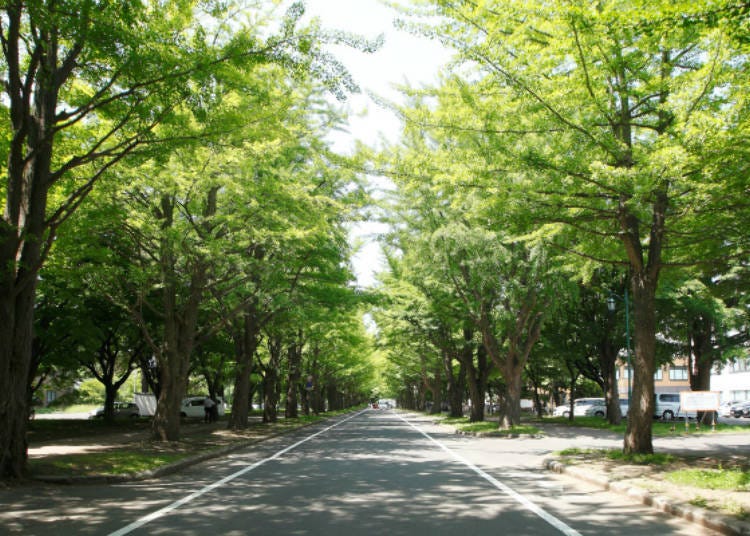
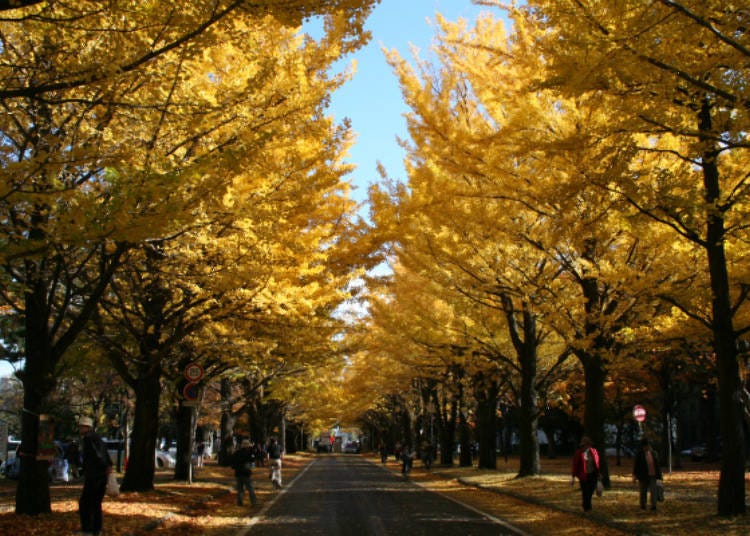
Finally, walking down the avenue of gingko trees going north you will come upon the Sapporo Agricultural College Farm No. 2 after about a 15-minute walk. It was established in 1876 as the first model working farm in Hokkaido. In 1969 it was designated an important cultural asset. Implements that were used in its beginning are exhibited here and every year between April 29 and November 3 visitors can freely visit it.
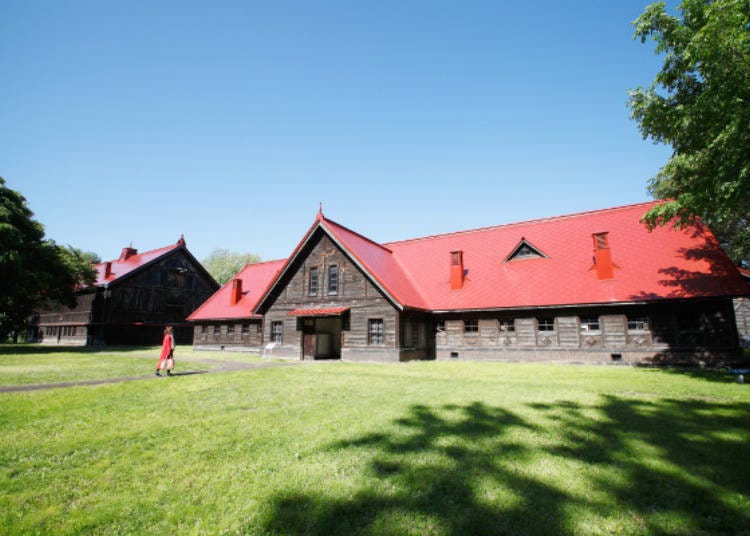
-
Sapporo Agricultural College Farm No. 2札幌農学校第2農場
- Address 〒001-0018 北海道札幌市北区北18条西8 北海道大学構内/Hokkaido University, 8, Kita18-jonishi, Kita-ku Sapporo-shi, Hokkaido, 001-0018, Japan
Phone Number : 011-706-2658(The Hokkaido University Museum)
Entrance fee: none
Hours: outdoors 8:30 AM ~ 5:00 PM; indoors 10:00 AM ~ 4:00 PM
Closed: indoors every year between November 4 and April 28; when open, it is closed the fourth Monday of every month ※The outdoor area is open year-round
We walked from south to north, but this is not the furthest point north. Just walking nonstop from the main gate along the avenue of gingko trees takes about 10 minutes.
During breaks between classes, the paths become crowded with students walking and riding bicycles making a literal rush hour. One cannot help but smile seeing this and being reminded of one’s own youth.
Leisurely strolling through the luscious green of this place is indeed relaxing. Even though I was here on an assignment, I felt quite refreshed!
One really strong point is the easy access to it from nearby JR Sapporo Station. Certainly you will want to spend as much time as possible here if you visit, so plan accordingly.
※All prices mentioned in the article include tax
Price: free
Hours of operation: sightseeing within the campus is unrestricted
-

-
Address
Kita eight Jo Nishi 5, Kita-ku, Sapporo, Hokkaido, 060-0808
View Map -
Nearest Station
Sapporo Station (Hakodate Main Line)
7 minutes on foot
- Phone Number 011-716-2111
-
Address
Kita eight Jo Nishi 5, Kita-ku, Sapporo, Hokkaido, 060-0808
Written by:Fumi
- Area
- Category
*Prices and options mentioned are subject to change.
*Unless stated otherwise, all prices include tax.
Recommended places for you
-
Appealing

Rukku and Uohei
Izakaya
Sapporo / Chitose
-

LakeAkan
Rivers, Lakes & Canyons
Abashiri
-

Farm Tomita
Other Nature
Furano / Biei / Sounkyo
-
Appealing

Shirogane Blue Pond (Aoiike)
Rivers, Lakes & Canyons
Furano / Biei / Sounkyo
-
Appealing

Kanemori Red Brick Warehouse
Shopping Malls
Hakodate
-
Appealing
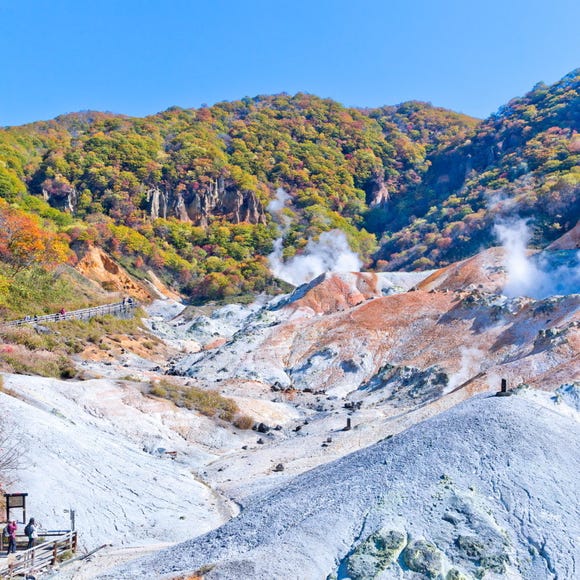
Noboribetsu Onsen
Hot Springs (Onsen) & Bath Houses (Sento)
Noboribetsu / Lake Toya
-

7 Iconic Hokkaido locations that will make your Instagram shine
by: Himanshi Shah
-
Ad

Smart Ways to Avoid Crowds and Enjoy a Safe, Comfortable Trip to Otaru.
-

Expert-Recommended: 9 Hakodate Hotels Serving Up the Best Breakfasts in Town
by: Nobuka Kawashima
-

Scenic Road Trip from Hakodate to Matsumae: Stunning Views, Traditions, and Tasty Delights
by: Nobuka Kawashima
-

Step into History at the Ofune World Heritage Site: Explore Hokkaido's Jomon Culture
-
Ad

Cycling Through Hokkaido: Discover the Beauty of Memuro and the Tokachi Plains
-

Fine Food and...Steam Locomotives!? 3 Quirky Rest Areas in Japan
-

12 Fun Things to Do Near Otaru Canal: Art, History & More
-

Top 10 Must-Visit Major Cities in Japan – Where Should You Travel?
-

Kichijoji – Explore Tokyo’s Top-Rated Stylish Suburb in Half a Day!
-

These 16 Things to Do in Hakodate Japan Will Make You Fall in Love With the Northern Wonderland
-

Feel 150 Years of History: 12 Iconic & Exotic Hokkaido Landmarks
- #best sushi hokkaido
- #things to do hokkaido
- #best ramen sapporo
- #what to bring to japan
- #new years in tokyo
- #what to buy in ameyoko
- #japanese nail trends
- #what to do in odaiba
- #onsen tattoo friendly tokyo
- #daiso
- #best sweets otaru
- #japanese fashion culture
- #best nature furano
- #japanese convenience store snacks
- #best japanese soft drinks

















